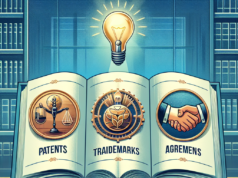
In an era where digital content is more accessible than ever, the complexities of film copyright laws have come to the forefront of discussions among filmmakers, legal experts, and audiences alike. While these laws are designed to protect the creative rights of filmmakers, they also present challenges that can stifle innovation and collaboration. This article aims to unveil the darker side of film copyright laws, exploring their purpose, implications, and the evolving landscape that filmmakers must navigate.
Understanding Film Copyright Laws: An Overview of Their Purpose and Scope
Film copyright laws serve as a legal framework designed to protect the intellectual property rights of creators, ensuring that filmmakers can control the use and distribution of their works. These laws grant exclusive rights to the creators, allowing them to reproduce, distribute, and publicly display their films. The scope of these laws extends to various aspects of filmmaking, including scripts, soundtracks, and visual elements. However, the rapid evolution of technology and the internet has complicated the enforcement of these laws, leading to a growing number of copyright disputes and a need for clearer guidelines.
The Impact of Copyright Infringement on Filmmakers and the Industry at Large
Copyright infringement poses significant risks to filmmakers and the broader film industry. When unauthorized copies of films circulate, it not only undermines the financial viability of projects but also diminishes the incentive for creators to invest time and resources into new works. Independent filmmakers, in particular, are vulnerable to the repercussions of piracy, as they often operate on limited budgets and rely heavily on box office revenue. The industry as a whole suffers from a culture of infringement, which can lead to reduced funding for future projects and a decline in the diversity of stories being told.
Navigating the Complexities of Fair Use in Film: What You Should Consider
Fair use is a critical yet often misunderstood aspect of copyright law that allows for limited use of copyrighted material without permission from the rights holder. In the context of film, fair use can apply to various scenarios, such as commentary, criticism, or educational purposes. However, determining what constitutes fair use is not always straightforward, as it involves a case-by-case analysis of factors such as the purpose of use, the nature of the copyrighted work, the amount used, and the effect on the market value of the original work. Filmmakers must tread carefully when invoking fair use, as misinterpretation can lead to costly legal battles.
The Role of Copyright in Protecting Creative Works: Benefits and Limitations
Copyright plays a vital role in safeguarding the creative works of filmmakers, providing them with the legal means to protect their intellectual property. The benefits of copyright include the ability to monetize works, control over distribution, and the potential for legal recourse against infringers. However, there are limitations to these protections. For instance, copyright does not cover ideas, concepts, or facts, which can lead to disputes over originality. Additionally, the duration of copyright protection can vary, and once a work enters the public domain, it can be freely used by anyone, potentially diminishing the creator’s control over their work.
Case Studies: Notable Legal Battles in Film Copyright and Their Implications
Several high-profile legal battles have highlighted the complexities of film copyright laws and their implications for the industry. One notable case is the dispute between Warner Bros. and the creators of “The Hangover Part II,” where the filmmakers faced allegations of copyright infringement for using a tattoo design without permission. The case underscored the importance of obtaining rights for all elements of a film, as well as the potential consequences of overlooking copyright issues. Another significant case involved the documentary “Copyright Criminals,” which examined the fine line between copyright infringement and fair use, ultimately raising questions about the future of sampling and remix culture in film.
Future Trends in Film Copyright Laws: What Filmmakers Need to Anticipate
As technology continues to evolve, filmmakers must stay informed about potential changes in film copyright laws. The rise of streaming platforms and user-generated content has prompted discussions about the need for updated regulations that reflect the realities of modern filmmaking. Additionally, the increasing prevalence of artificial intelligence in content creation raises questions about authorship and copyright ownership. Filmmakers should anticipate a shift towards more flexible licensing agreements and a greater emphasis on collaborative approaches to copyright, as the industry seeks to balance the protection of creative works with the need for innovation and accessibility.
In conclusion, while film copyright laws are essential for protecting the rights of creators, they also present challenges that can hinder creativity and collaboration within the industry. Understanding the intricacies of these laws, including the implications of copyright infringement and the complexities of fair use, is crucial for filmmakers navigating this landscape. As the industry evolves, staying informed about future trends and potential legal changes will be vital for filmmakers seeking to protect their work while fostering innovation. The dialogue surrounding film copyright laws will undoubtedly continue, shaping the future of storytelling in an increasingly digital world.


























